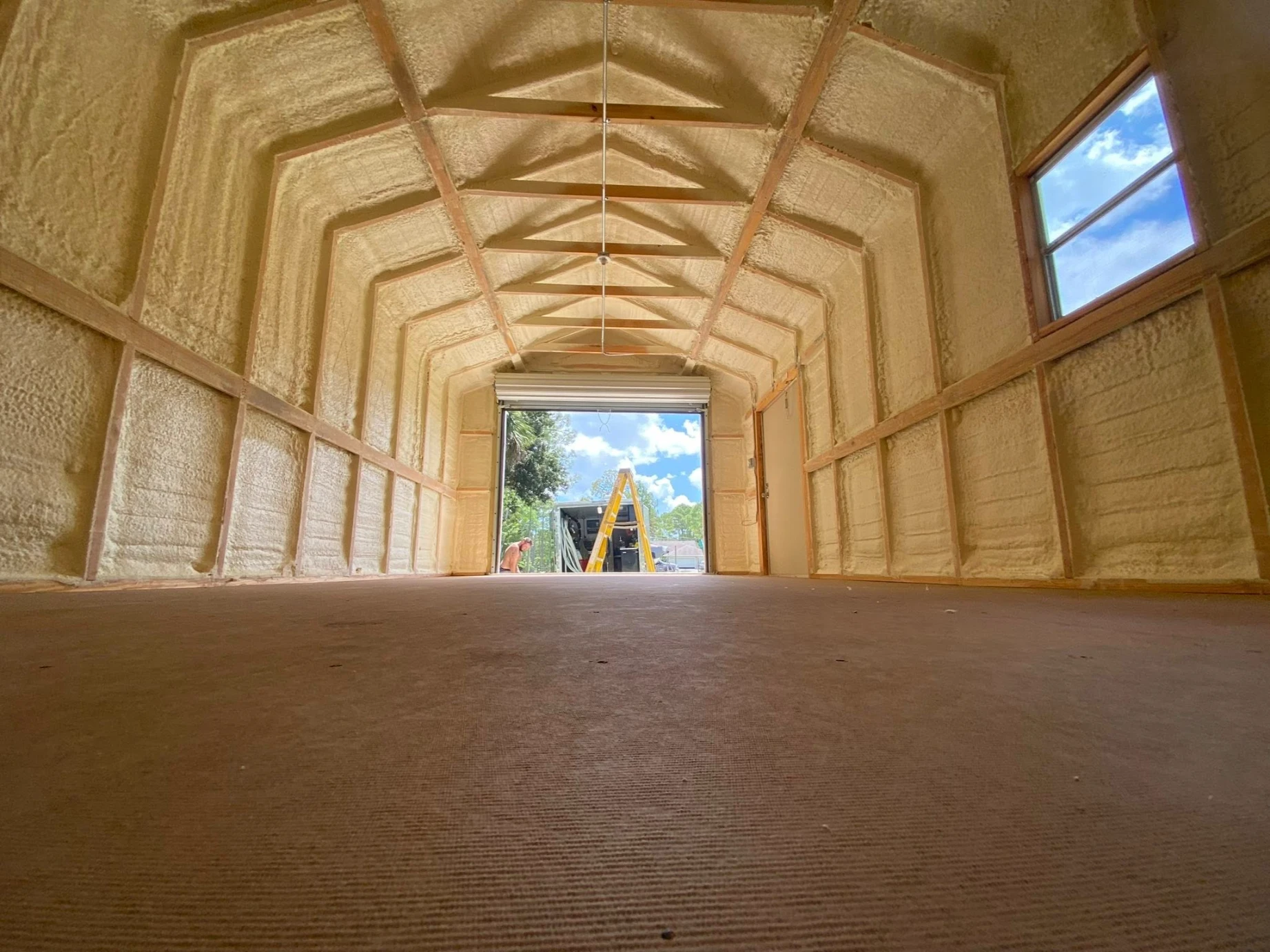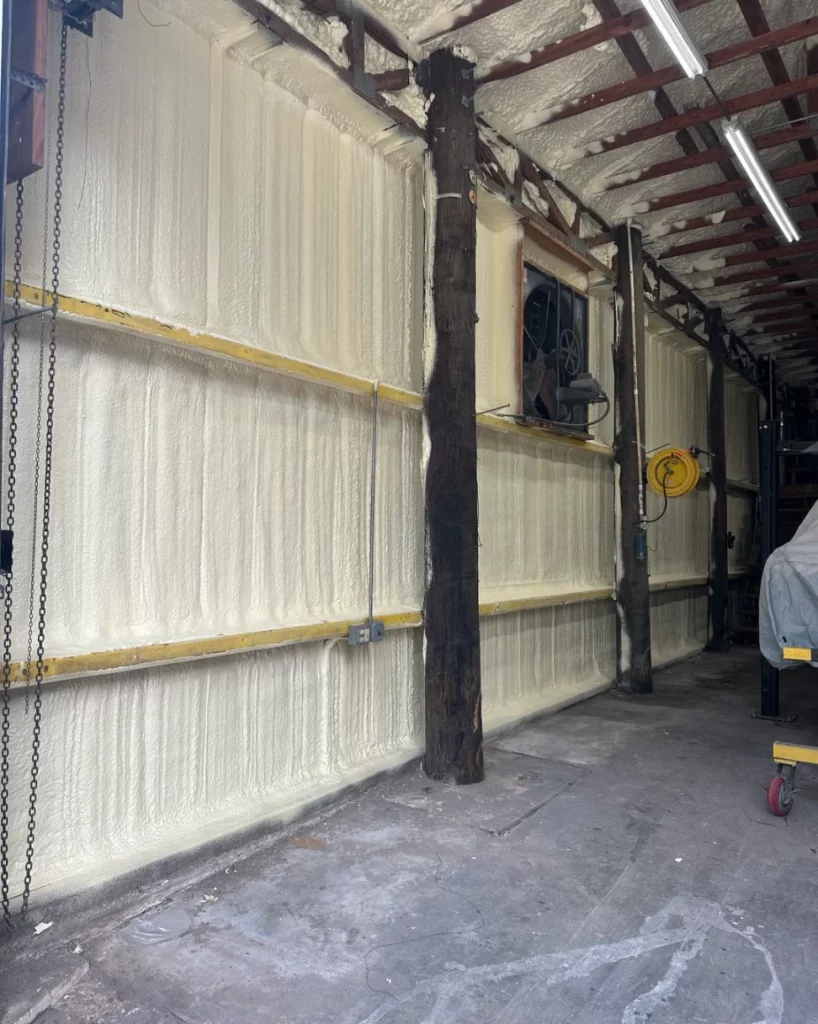
When a professional spray foam installation team arrives at your Wellington property, you should expect a systematic process that prioritizes safety, precision, and cleanliness. The crew will begin by thoroughly preparing the work area, which involves sealing off the space with plastic sheeting to protect your floors, windows, and belongings from overspray. Technicians will be outfitted in full personal protective equipment (PPE), including respirators and coveralls, before starting the application. Using specialized equipment, they will apply the foam in measured layers to ensure it cures correctly and achieves the specified thickness and R-value. After the application is complete, the team handles all cleanup, including trimming any excess foam and removing all protective materials, leaving the space tidy.
This guide walks through each step of a professional spray foam installation, from the first call to the final inspection. Understanding the process helps you know what questions to ask and how to identify a skilled and trustworthy contractor. The information here is based on extensive field experience in residential and commercial insulation projects.
The first step is a detailed on-site evaluation. A project manager or lead technician will visit your property to understand your specific needs. This isn’t just about measuring square footage.
The assessment includes:
During the consultation, the team will explain the differences between the two main types of spray polyurethane foam (SPF). Each has distinct properties suited for different applications.
| Feature | Open-Cell SPF | Closed-Cell SPF |
|---|---|---|
| Density | Low-density (about 0.5 lbs per cubic foot) | High-density (about 2.0 lbs per cubic foot) |
| Structure | Spongy and flexible; cells are not fully encapsulated | Rigid and dense; cells are fully encapsulated |
| R-Value | Approx. R-3.5 to R-3.8 per inch | Approx. R-6.0 to R-7.0 per inch |
| Air Barrier | Yes, effective air barrier | Yes, excellent air barrier |
| Vapor Permeability | Permeable to moisture vapor | Non-permeable; acts as a vapor barrier |
| Common Uses | Walls, attics, soundproofing | Basements, crawl spaces, exterior applications |
Closed-cell foam is often recommended for areas prone to moisture, while open-cell foam is a great air sealant and sound dampener for interior walls and roof decks.
Proper preparation is the mark of a professional crew. Before any equipment is turned on, the team will take considerable time to protect your property. This phase is critical for a clean and successful project.
Expect the team to:
Bonus Tip: You can help the process go smoothly by clearing personal items, like stored boxes in an attic or tools in a garage, from the work area before the team arrives. This gives them immediate and safe access.
With the site prepared, the application begins. This is a technical process that requires precision and expertise. The foam is created on-site by combining two liquid components that react and expand upon contact.
A professional team will:
The global spray foam insulation market is growing, a trend driven by rising energy costs and a greater focus on building efficiency. A report from Grand View Research projects continued expansion, showing that more property owners are choosing this insulation method for its long-term benefits.

Once the spraying is finished, the job isn’t over. The final phase involves detailed work and returning your space to its original condition.
The crew will:
Bonus Tip: Ask the team about the recommended curing time. While the foam is typically tack-free within minutes, it can continue to off-gas for up to 24 hours. It’s best to avoid the area during this period.
Choosing the right contractor is as important as choosing the right insulation. Before signing a contract, make sure you’ve covered these points:
A professional spray foam installation is a coordinated effort that combines technical skill with a strong focus on safety and property protection. By understanding what to expect from a qualified team, you can feel confident in your investment and the long-term energy savings and comfort it will bring. Before moving forward, evaluate your home’s specific needs and choose a contractor who demonstrates a commitment to quality from the initial consultation to the final cleanup.
For a detailed assessment of your property’s insulation needs, the team at ALL IN OVERHALL can provide a comprehensive consultation. You can discuss your project with an expert by calling (561) 406-3835 or sending an email to [email protected]. An experienced professional can help you determine the right insulation solution for your Wellington home or business, ensuring the job is done correctly and safely from start to finish.
Most residential projects, like an attic or crawl space, can be completed in a single day. Larger or more complex jobs might take two days.
The R-value depends on the type of foam. Open-cell foam typically provides about R-3.7 per inch, while closed-cell foam can offer up to R-7 per inch.
Yes, spray foam is commonly used for retrofitting existing homes. It can be applied in attics, crawl spaces, and even walls using a slow-rise injection formula.
Open-cell spray foam is an excellent sound-dampening material due to its soft, porous texture, which is effective at absorbing sound waves.